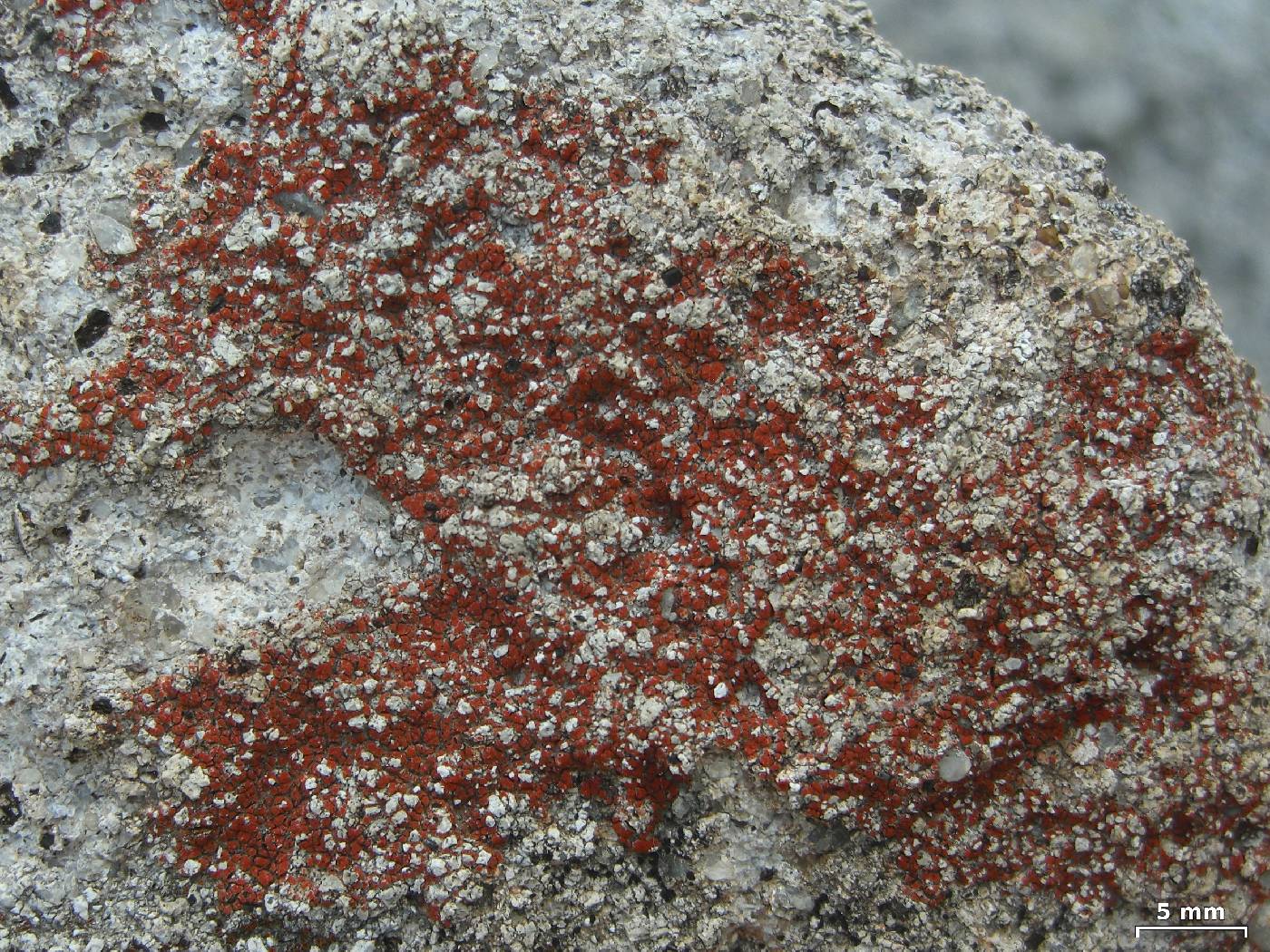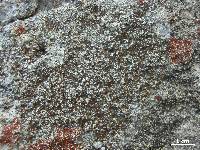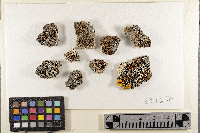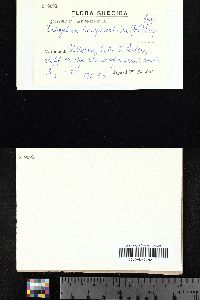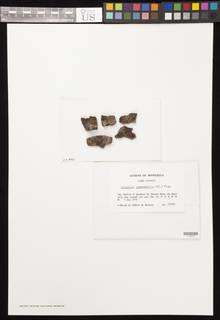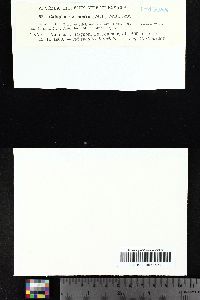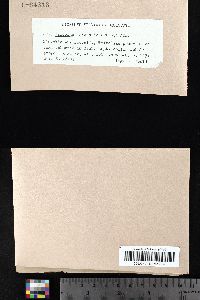
Consortium of Lichen Herbaria
- building a Global Consortium of Bryophytes and Lichens as keystones of cryptobiotic communities -
- Home
- Search
- Images
- Species Checklists
- US States: O-Z >
- US National Parks
- Central America
- South America
- US National Parks
- Southern Subpolar Region
|
|
|
|
Family: Teloschistaceae
[Biatora ferruginea var. festiva (Ach.) Fr., moreBlastenia arenaria (Pers.) A. Massal., Blastenia craspedia (Ach.) B. de Lesd., Blastenia erythrocarpa (Ach.) Körb., Blastenia erythrocarpia (Ach.) Körb., Blastenia festiva (Ach.) A. Massal., Blastenia lamprocheila (DC.) Arnold, Callopisma arenarium (Pers.) Trevis., Callopisma ferrugineum var. festivum (Ach.) Mudd, Callopisma festivum (Ach.) Bagl., Callopisma lamprocheilum (DC.) Trevis., Caloplaca arenaria (Pers.) Müll. Arg., Caloplaca arenaria f. arenaria (Pers.) Müll. Arg., Caloplaca arenaria var. arenaria (Pers.) Müll. Arg., Caloplaca craspedia (Ach.) Szatala, Caloplaca erythrocarpia (Ach.) Zwackh, Caloplaca erythrocarpia f. erythrocarpia (Ach.) Zwackh, Caloplaca erythrocarpia var. erythrocarpia (Ach.) Zwackh, Caloplaca ferruginascens (Nyl.) H. Olivier, Caloplaca ferruginea var. festiva (Ach.) Th. Fr., Caloplaca festiva (Ach.) Zwackh, Caloplaca festiva f. festiva (Ach.) Zwackh, Caloplaca festiva var. festiva (Ach.) Zwackh, Caloplaca lamprocheila (DC.) Flagey, Caloplaca lamprocheila f. lamprocheila (DC.) Flagey, Caloplaca pyracea var. picta (Taylor) H. Olivier, Gasparrinia erythrocarpia (Ach.) Tornab., Gasparrinia ferruginea var. festiva (Ach.) Tornab., Lecanora arenaria (Pers.) Röhl., Lecanora ferruginascens Nyl., Lecanora ferruginea f. festiva (Ach.) Nyl., Lecanora ferruginea var. festiva (Ach.) Nyl., Lecanora lamprocheila (DC.) Nyl., Lecidea arenaria (Pers.) Steud., Lecidea caesiorufa var. festiva Ach., Lecidea craspedia (Ach.) Hue, Lecidea erythrocarpia Ach., Lecidea erythrocarpia var. erythrocarpia Ach., Lecidea ferruginascens (Nyl.) Hue, Lecidea ferruginea var. festiva (Ach.) Schaer., Lecidea festiva (Ach.) Hue, Lecidea lamprocheila (DC.) Hue, Lecidea picta Taylor, Lichen arenarius Pers., Parmelia arenaria (Pers.) Mart., Parmelia erythrocarpia (Ach.) Fr., Patellaria arenaria (Pers.) Hoffm., Patellaria lamprocheila DC., Placodium arenarium (Pers.) Naeg., Placodium erythrocarpium (Ach.) Anzi, Placodium ferruginascens (Nyl.) Räsänen, Placodium ferrugineum f. ferruginascens (Nyl.) A.L. Sm., Placodium ferrugineum var. festivum (Ach.) A.L. Sm., Placodium festivum (Ach.) Hepp, Placodium festivum var. festivum (Ach.) Hepp, Verrucaria arenaria (Pers.) Hoffm., Zeora erythrocarpia (Ach.) Flot.] |
Nash, T.H., Ryan, B.D., Gries, C., Bungartz, F., (eds.) 2007. Lichen Flora of the Greater Sonoran Desert Region. Vol 3. Life habit: lichenized Thallus: little or none, crustose, without elongated lobes; prothallus: absent surface: gray, smooth, without asexual propagules cortex: indistinct Apothecia: adnate, 0.3-0.7 mm in diam., lecanorine disc: dark reddish orange, flat, epruinose margin: persistent, flush to slightly raised; thalline margin absent; proper margin visible, little lighter than disc parathecium: elongate to oval cells hymenium: hyaline, 55-70 µm tall paraphyses: 1-2 tip cells slightly swollen, with few or with some branching; subhymenium hyaline asci: cylindrical, 8-spored ascospores: hyaline, 2 locules, ellipsoid, 11-12.5(-17) x 4-5.5 µm, isthmus 1-1.5(-3) µm, spore end wall thin Pycnidia: not observed Spot tests: apothecial margin K+ red Secondary metabolites: parietin, fallacinal, emodin, and teloschistin. Substrate and ecology: on non-calcareous rocks World distribution: worldwide Sonoran distribution: southern California, Arizona, Baja California, and Baja California Sur. Notes: Caloplaca arenaria has little or no visible thallus, flat apothecia that are usually somewhat angular and occurs on non-calcareous rocks. Caloplaca marmorata has convex apothecia and occurs on calcareous rocks. Caloplaca luteominia var. bolanderi has flat to slightly convex red-brown apothecia, more thallus, and has larger spores. |
Powered by Symbiota

